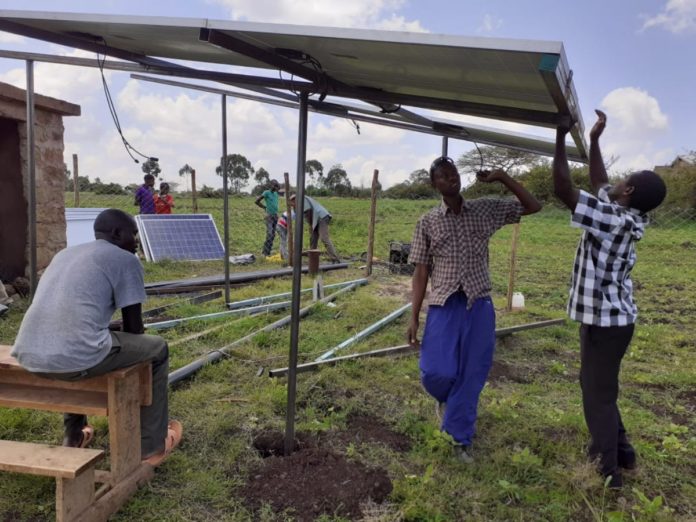Chuka, Kenya — Back in 2017, Eric founded Stegmax Construction company with the aim of solving the problem of water shortage in his village.
The startup, which focuses on drilling boreholes and installing them with solar-powered water pumps, has supplied over 10,000 liters of water to hundreds of poor families living in arid and semi-arid areas of Tharaka Nithi and Meru counties.
They usually start the whole process by digging a borehole if a client doesn’t have one. If the client has a borehole, they proceed directly with the installation.
First, pipes fitted to an electric solar pump are sunk into the borehole. The pump is in turn connected to solar panels stationed in an open place preferably on rooftops. Water pumped from a borehole is then connected to the tanks for storage to ensure sufficient water at night and when there is no sunlight. Complete installation takes less than ten days depending on the client’s needs.

‘Solar water pumps have saved us time and energy which we instead employ in other areas to increase production,’ says Kanaanu a resident at Kiang’ondu village from Tharaka Nithi County. ‘Now we have enough water for cleaning our hands,’ she adds.
Stegmax usually source the solar water pumps from overseas while other supplies like electrical fittings, metal supplies, pipes, plumbing fittings, waterworks, and labor are obtained locally.
In recent years, solar pumps have also been used in higher altitude areas to pump water from nearby rivers.
‘Here the nearest river could be too far below the location’s altitude to pump a significant amount of water. Also, climate change has turned many places to semi-arid leading to drying up surface water. That’s why we decided to face this challenge by restoring water using renewable energy,’ says Eric the co-founder of Stegmax Construction company.

Most of the people are able to fund the whole project by themselves. For those who are unable to meet the demands, they are supplemented with special funds by government and NGOs known as climate mitigation finance.
Mitigation finance is used to support projects that limit (mitigate) the onset of climate change. For instance, renewable energy projects and reforestation initiatives.
‘The definition of climate finance is enshrined in UN conventions in that it must be “new and additional” to any aid money previously pledged, and must be specifically pledged to climate change hence minimizing the chances of misuse,’ says Arthur Wyns, a tropical biologist and science journalist.
Energy transition is on its way. While there are still some who are against it, the great majority like Eric, have embraced the transition and have proved to be unstoppable.

Sustainability is the big picture of the whole system, and we cannot bring successful businesses while ignoring the people and environment.
When Trump administration walked away from their commitments to climate change finance and other pledges, many US citizens, businesses, and local states who felt that they were still committed to Paris Agreement responded by forming a new coalition called ‘we are still in’ during COP23.
Consequently, new donations were pledged and finances tripled in order to fill the gap left by the US government.

